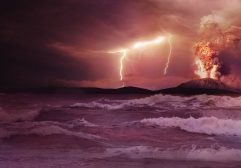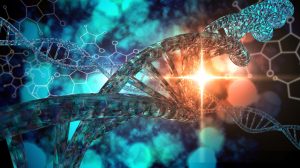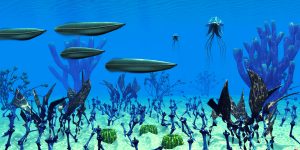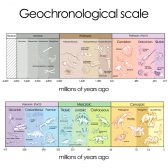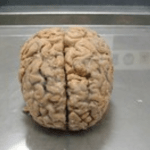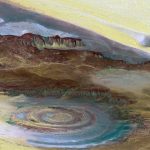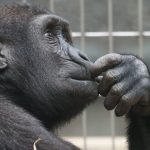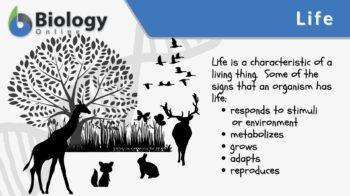
Life
n., plural: lives
[laɪf]
Definition: characteristic of a living organism; biota
Table of Contents
Life Definition
Life is a characteristic of a living organism that distinguishes the latter from a dead organism or a non-living thing, as specifically distinguished by the capacity to grow, metabolize, respond (to stimuli), adapt, and reproduce. Life may also pertain to the biota of a particular region. Word origin: Old English līf (life, body).
Basic Characteristics of a Living Thing
When does life begin? There is no consensus about where life begins. Does it begin at the time of fertilization or the time before or after that? The origin of life is also contestable. Despite the irresolute answer for questions about life, the basic characteristics of a living thing are as follows:
- Organization. Living things have an organized structure to perform a specific function. In particular, a living thing is made up of a single cell or a group of cells. A cell is the basic structural and functional unit of any organism.
- Homeostasis. A life form would have the ability to keep up its existence, for instance, by regulating its internal environment to keep up a constant or favorable state.
- Metabolism. A living thing would be capable of converting energy from chemicals into cellular components through anabolic reactions. It would also be capable of decomposing organic matter through catabolism.
- Growth. A living thing grows, i.e. in size or in number.
- Response. An organism has the ability to respond to stimuli or to its environment, usually through a series of metabolic reactions.
- Reproduction. One of the hallmarks of life is the ability to reproduce, i.e. producing a new of its kind.
- Adaptation. An organism is capable of changing through time to adapt to its environment.
Evolutionary History of Life
Biologically, evolution is important because it drives biodiversity. Some traits will become predominant while others will become rare over the course of time. Without evolution, life may not be the way we know it. It will not be as diverse as it is now.
The Earth itself goes through a series of changes. At one point, the Earth was an inhabitable planet. The primitive condition of the Earth was hostile to life. It was presumed that only after about one billion years from the time that the Earth first came into being that life began. RNA-based, self-replicating entities are held as the descendants of all living things. Over a significant period of time, these life forms evolved into single-celled organisms. Multicellular forms came next. They first appeared about 600 million years ago.
Tracking the history of life at various geologic eras, one would find several mass extinctions occurring in between the bursts of life. For instance, during the Permian period of the Paleozoic era, the Earth had a supercontinent called Pangaea surrounded by Panthalassa ocean. This caused the inland to be very dry and arid. Because of this, reptiles flourished as they were able to thrive even in such habitats. A reptile group Dimetrodon evolved and gave rise to therapsids. The therapsids, in turn, evolved and gave rise to cynodonts, which were the early ancestors of animals. During this period, the early dinosaur ancestors, archosaurs, also appeared. Apparently, a mass extinction called “the Great Dying” occurred and wiped about 90% of life on Earth. The next era (Mesozoic era) is called “the Age of the dinosaurs”. These animals dominated the land, the seas, and the air of the Earth. However, a mass extinction occurred and caused the death of the dinosaurs as well as other large animals. Nevertheless, mammals took the open niche and expanded.
Evolution is crucial for life to persist on the ever-changing Earth. The organisms need to have the capacity to adapt genetically and phenotypically. Engaging in symbiotic relationships with other organisms could also help increase the propensity to survive and thrive. Along with evolution, speciation transpired. Species diverge into two or more descendant species throughout the course of evolution. Unfortunately, though, most of the species that lived on Earth already met their demise. 99% of the Earth’s species are now extinct. These organisms perished and their species entirely disappeared. Thus, it would seem that the extinction of species is inevitable.
LUCA
A diagram, called an evolutionary tree, shows the evolutionary relationships of organisms. The grouping is based on the similarities and the differences in genetic and physical characteristics. The pattern of branching represents how species or entities evolved from a particular common ancestor. Tracking down the course of evolution of all living things that lived on Earth would altogether lead to the common ancestor, LUCA (last universal common ancestor). LUCA is the hypothetical ancestor of all living things and it is presumed to emerge some 3.5 to 3.8 billion years ago.
There is no consensus as yet as to how life originated on Earth. However, many believed that the RNA-based, self-replicating entities were likely the descendant of all living things. These entities evolved into single-celled organisms containing cytoplasmic structures but lacking internal compartmentalization. Single-celled organisms lacking membrane-bound organelles are referred to as prokaryotes.
Endosymbiotic theory
The prokaryotes emerged before the eukaryotes did. They were able to bear up the primitive hostile conditions of the Earth. Later on, single-celled eukaryotes appeared around 1.6 to 2.7 billion years ago. The endosymbiotic theory proposes that larger cells took in smaller cells, such as bacteria and cyanobacteria, for a cooperative association (endosymbiosis). Together, they underwent coevolution. In due course, the smaller prokaryotes evolved into semi-autonomic organelles. The bacteria evolved into mitochondria whereas the cyanobacteria, into chloroplasts. The presence of membrane-bound organelles inside the cell led to the advent of eukaryotes.
Multicellularity
In the Neoproterozoic era, particularly in the Ediacaran period (around 600 million years ago), the first multicellular form emerged. How multicellularity came about is still a matter of debate until now. The most popular theory in this regard is that of Haeckel’s. According to his Gastraea Theory, multicellularity occurred when cells of the same species group together in a blastula-like colony, and gradually, certain cells in the colony underwent cell differentiation. Also in this period, sponge-like organisms evolved based on the recovered fossils of Ediacaran biota. They were presumed to be the first animals.
Cambrian explosion
The next era, the Paleozoic, is comprised of the geologic periods from Cambrian to Permian, each highlighted by major evolutionary events. In the Cambrian period (around 541 million years ago), a sudden burst of life occurred. This geologic event was called the Cambrian explosion. Diverse plants and animals came into being. Plants and fungi spread to the land. Soon, animals such as arthropods ventured ashore, probably to mate and lay eggs.
Rise of invertebrates
In the Ordovician period (485 to 440 million years ago), the invertebrates were the dominant animals. Primitive fish continue to evolve that in the next geologic period, Silurian, a mass evolution of fish occurred. Also in Silurian (440 to 415 million years ago), arachnids and arthropods started to colonize the land, not just ventured it. Internal gas exchange systems, waterproof external layers, skeletal systems (endo- or exoskeletons), and a form of reproduction not involving water came about and helped life on land plausible.
“Age of the Fish”
Devonian period (415 to 360 million years ago) is called the Age of the Fish. The fish became the dominant marine vertebrate species. On land, plants evolved and primitive plants, trees, and shrub-like forests served as new habitats. With the evolution of land plants, the animals, too, evolved and diversified. Amphibians were the first tetrapods to appear. They emerged around 364 million years ago.
The emergence of the amniotes
In the Carboniferous period (360 to 300 million years ago), a major evolutionary event occurred. Tetrapods that lay amniotic eggs emerged. The laying of amniotic eggs in a drier environment allowed the tetrapod amniotes to move farther away from the waterside and thereby dominate farther inland. Because of this, these early amniotes diversified greatly towards the end of this period.
Permian reptiles
In the Permian period (300 to 250 million years ago), reptiles and synapsids flourished. Soon, a major evolutionary event occurred, which led to the emergence of beast-faced therapsids. These therapsids later gave rise to the cynodonts (the early ancestors of mammals). The first archosaurs (early ancestors of dinosaurs) also appeared in the Permian period.
“Age of the Dinosaurs”
Following the Paleozoic era is the Mesozoic era (252 to 66 million years ago), which is referred to as “the Age of the Dinosaurs”. The dinosaurs roamed and dominated the Earth. However, a mass extinction event occurred. They perished together with the other large animals (>25 kg in weight) by the end of this era.
“New Life”
In the next era, Cenozoic (66 million years ago to the present day) era is called the “New Life”. Mammals expanded and diversified. The great apes evolved and led to the evolution of hominids, which was the evolutionary line that led to the Homo species. The only extant species of the genus Homo is the Homo sapiens (anatomically modern humans).
See also:
Try to answer the quiz below to check what you have learned so far about life.
©BiologyOnline.com. Content provided and moderated by Biology Online Editors.

